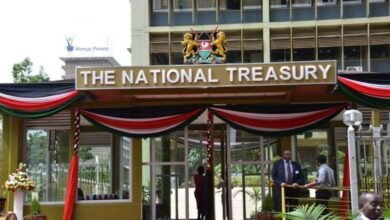
Analysts at Genghis Capital have raised fresh concerns on the volatility of the shilling should the National Treasury’s plan to stop taking up external commercial loans take effect.
While the switch up to concessional funding by the exchequer is expected to rid the country from higher external interest bills, the analysts reckon consolidation will come at the expense of usable forex (FX) reserves.
This is as the Central Bank of Kenya (CBK) continuously relies on dollar flows from debt to build on its foreign currency cover for the shilling.
“Concessional financing is unlikely to end up in reserves as raised funds are typically channelled specifically into projects,” said Genghis Capital Senior Research Analyst Churchill Ogutu.
“FX reserves have historically been boosted by debt financing, specifically by Eurobonds and syndicated loans”
The analogy by the investment banker’s research has held true with both the shilling and FX cover holding up in the aftermath of external commercial debt issuance.
In March last year, Kenya’s forex cover jumped beyond the Ksh.1 trillion mark ($10 billion) in the backwash of the third Eurobond sale which totalled Ksh.210 billion ($2.1 billion).
FX reserves continue to feature centrally in CBK’s containment of local currency volatilities through open market operations (OMOs).
While the reserve bank does not disclose publicly its extent of containment, the lender typically stocks up foreign currencies in its vault for later disposal through sales made to investors as a means to absorb shocks through demand and supply metrics.
The CBK, for instance, stepped up its sale of dollars in the second half of 2019 to holding up the shilling at a time when the local unit came under considerable pressures from the liquidity wash in the domestic market and higher dollar demands.
Further to quelling currency valuation fires, Forex reserves step in to meet foreign currency debt redemptions as and when required.
To correct the mishap on debt-dependent cover, Ogutu recommends the reconstitution of the vault’s contributions drawing lessons from East Asian Central Banks purchase of foreign currencies from exporters in exchange of local currencies.
The changeover in hedging is however only possible in the case for better foreign currency inflows in comparison to outflows.
CBK usable foreign currency reserves remained adequate during the last week at Ksh.845 billion ($8.5 billion) or an equivalent 5.2 months of import cover and above the reserve’s bank statutory criteria.
Remittances in the year to December meanwhile flanked the dollar flows having leapt forward 3.7 percent in 2019 to Ksh.280 billion ($2.8 billion) in spite of the exhibition of softening growth following the end of the declared 10 percent tax amnesty in June last year.
Moreover, dollarized redemptions are estimated at Ksh.310 billion ($3.1 billion) for the year against the higher FX cover to ease concerns in the short-run.
The local unit is however expected to remain stable in the short run to the guidance of Ksh.100 and Ksh.104 to the dollar with improved tourism receipts providing room for further respite.
According to tracking by Bloomberg, the Kenyan shilling traded at an average of Ksh.101 to the dollar on Tuesday having registered a marginal gain from Monday’s close of Ksh.101.07.





